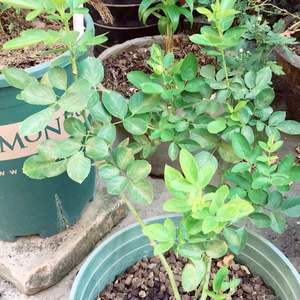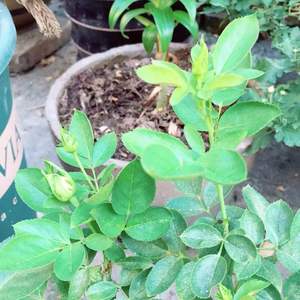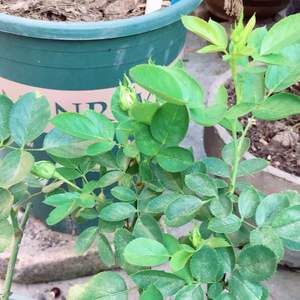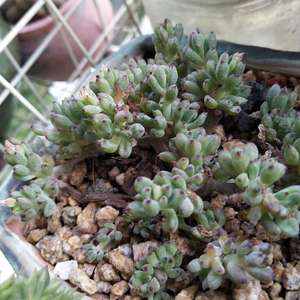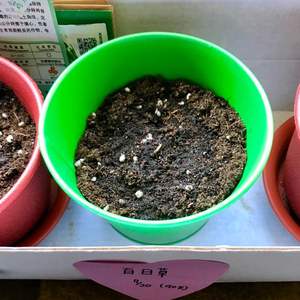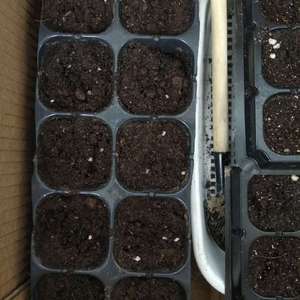文章
Miss Chen
2018年08月06日

Description: This is a biennial plant. During the 1st year, it consists of a rosette of basal leaves spanning about ¾–1½' across. During the 2nd year, it produces a flowering stalk that becomes 3-7' tall, branching occasionally above. The stems are round, glabrous, light green, and purple-spotted; they often appear to be ribbed because of longitudinal veins. The alternate leaves are up to 18" long and 12" across, becoming smaller as they ascend the stems. They are double or triple pinnately compound, triangular-ovate in outline, and hairless. These leaves have a fern-like appearance and a somewhat filmy upper surface. The basal and lower leaves have long petioles, while the upper leaves have shorter petioles. The base of each petiole is partially covered by a sheath. The ultimate leaflets of the compound leaves are about 1/3" (8 mm.) long, lanceolate to ovate in shape, pinnately cleft or dentate, and hairless.
The upper stems terminate in compound umbels of small white flowers. These compound umbels span about 2-5" across and consist of about 8-16 umbellets. Each umbellet consists of about 12-25 flowers. Individual flowers span only 1/8" (3 mm.) across when they are fully open. Each flower has 5 white obcordate petals, 5 spreading white stamens, and a white nectar pad in the center. At the base of the compound umbel are several floral bracts that are ovate-lanceolate with elongated tips; there are also several bractlets at the base of each umbel. These bractlets are ovate-lanceolate like the bracts, but smaller in size. The blooming period occurs from late spring to mid-summer and lasts about 1-2 months. Each flower is replaced by a schizocarp that is broadly ovate and somewhat flattened; it has several longitudinal ribs that are wavy. The root system consists of a white taproot. This plant spreads by reseeding itself; it often forms colonies at favorable sites.

Cultivation: The preference is full sun to light shade, moist conditions, and a fertile loamy soil. Most vegetative growth occurs during the spring. After blooming and developing seeds, the foliage turns yellow and withers away later in the summer. In removing this plant from a given area, don't pull it out using your bare hands. It is better to wear washable gloves while hand-pulling a limited number of plants. For large areas of infestation, it is best to apply broadleaf herbicides or mow down the plants during the spring shortly before they develop flowers.
Range & Habitat: Poison Hemlock is a common plant that occurs in many areas of Illinois, except for scattered counties in north and south (see Distribution Map). This plant is undoubtedly more common than official records indicate and it is still spreading to new areas of the state. Poison Hemlock is native to Europe and the Middle East, and it was introduced into North America either accidentally or deliberately.

Habitats include edges of degraded wetlands and prairies, low-lying areas along small rivers, banks of drainage ditches, thickets, woodland borders, fence rows, low-lying areas along railroads and roads, pastures, and abandoned fields. This plant is usually found in disturbed areas, but it occasionally invades native habitats.
Faunal Associations: The nectar of the flowers attracts a wide variety of flies, beetles, sawflies, and wasps, including Ichneumonid and other parasitoid wasps. Caterpillars of the butterfly, Papilio polyxenes asterius (Eastern Black Swallowtail), feed on the foliage, notwithstanding its extreme toxicity (personal observation). This toxicity is the result of the alkaloid coniine and other chemicals, which can be found in all parts of Poison Hemlock, including the seeds and roots. Another insect, Orthops scutellatus (Carrot Plant Bug), eats the seeds of this plant and other members of the Carrot family (Knight, 1941). Poison Hemlock is also a summer host plant of several aphids, including Dysaphis apiifolia (Hawthorn-Parsley Aphid), Hyadaphis foeniculi (Fennel Aphid), and Hyadaphis passerinii (Honeysuckle Aphid); see Blackman & Eastop (2013). Mammalian herbivores won't touch the foliage because of its bitter rank odor and extreme toxicity. Just a small portion of the ingested plant can be fatal to humans.

Comments: The ancient Athenians used the juices of this plant to execute their prisoners, including Socrates during 399 B.C. Death is caused by respiratory arrest and heart failure. Poison Hemlock is a tall and imposing plant that appears to be increasingly common. Many people walk past this species without even realizing what it is. Because there are many members of the Carrot family with small white flowers, it can be somewhat difficult to correctly identify this plant. Poison Hemlock has the following key features: 1) it is often tall-growing, 1) the foliage is at least double pinnate and fern-like in appearance, 2) the foliage has a bitter rank odor, especially when it is bruised, 3) the hairless stems have purple spots, 4) there are undivided bracts at the base of the compound umbel and undivided bractlets at the base of the umbellets, and 5) the small leaflets are pinnately cleft or dentate. Other members of the Carrot family lack one or more of these key features.
The upper stems terminate in compound umbels of small white flowers. These compound umbels span about 2-5" across and consist of about 8-16 umbellets. Each umbellet consists of about 12-25 flowers. Individual flowers span only 1/8" (3 mm.) across when they are fully open. Each flower has 5 white obcordate petals, 5 spreading white stamens, and a white nectar pad in the center. At the base of the compound umbel are several floral bracts that are ovate-lanceolate with elongated tips; there are also several bractlets at the base of each umbel. These bractlets are ovate-lanceolate like the bracts, but smaller in size. The blooming period occurs from late spring to mid-summer and lasts about 1-2 months. Each flower is replaced by a schizocarp that is broadly ovate and somewhat flattened; it has several longitudinal ribs that are wavy. The root system consists of a white taproot. This plant spreads by reseeding itself; it often forms colonies at favorable sites.

Cultivation: The preference is full sun to light shade, moist conditions, and a fertile loamy soil. Most vegetative growth occurs during the spring. After blooming and developing seeds, the foliage turns yellow and withers away later in the summer. In removing this plant from a given area, don't pull it out using your bare hands. It is better to wear washable gloves while hand-pulling a limited number of plants. For large areas of infestation, it is best to apply broadleaf herbicides or mow down the plants during the spring shortly before they develop flowers.
Range & Habitat: Poison Hemlock is a common plant that occurs in many areas of Illinois, except for scattered counties in north and south (see Distribution Map). This plant is undoubtedly more common than official records indicate and it is still spreading to new areas of the state. Poison Hemlock is native to Europe and the Middle East, and it was introduced into North America either accidentally or deliberately.

Habitats include edges of degraded wetlands and prairies, low-lying areas along small rivers, banks of drainage ditches, thickets, woodland borders, fence rows, low-lying areas along railroads and roads, pastures, and abandoned fields. This plant is usually found in disturbed areas, but it occasionally invades native habitats.
Faunal Associations: The nectar of the flowers attracts a wide variety of flies, beetles, sawflies, and wasps, including Ichneumonid and other parasitoid wasps. Caterpillars of the butterfly, Papilio polyxenes asterius (Eastern Black Swallowtail), feed on the foliage, notwithstanding its extreme toxicity (personal observation). This toxicity is the result of the alkaloid coniine and other chemicals, which can be found in all parts of Poison Hemlock, including the seeds and roots. Another insect, Orthops scutellatus (Carrot Plant Bug), eats the seeds of this plant and other members of the Carrot family (Knight, 1941). Poison Hemlock is also a summer host plant of several aphids, including Dysaphis apiifolia (Hawthorn-Parsley Aphid), Hyadaphis foeniculi (Fennel Aphid), and Hyadaphis passerinii (Honeysuckle Aphid); see Blackman & Eastop (2013). Mammalian herbivores won't touch the foliage because of its bitter rank odor and extreme toxicity. Just a small portion of the ingested plant can be fatal to humans.

Comments: The ancient Athenians used the juices of this plant to execute their prisoners, including Socrates during 399 B.C. Death is caused by respiratory arrest and heart failure. Poison Hemlock is a tall and imposing plant that appears to be increasingly common. Many people walk past this species without even realizing what it is. Because there are many members of the Carrot family with small white flowers, it can be somewhat difficult to correctly identify this plant. Poison Hemlock has the following key features: 1) it is often tall-growing, 1) the foliage is at least double pinnate and fern-like in appearance, 2) the foliage has a bitter rank odor, especially when it is bruised, 3) the hairless stems have purple spots, 4) there are undivided bracts at the base of the compound umbel and undivided bractlets at the base of the umbellets, and 5) the small leaflets are pinnately cleft or dentate. Other members of the Carrot family lack one or more of these key features.
0
0
文章
Miss Chen
2018年07月24日

Description: This herbaceous perennial plant is 2½–7' tall at maturity, branching occasionally. At the base of the plant, the primary stem is relatively stout (up to 1" across) and angular-terete. Small alternate leaves are appressed against this stem; they are light yellow to purple, deltate in shape, and scale-like in appearance. As the primary stem continues to lengthen, it develops alternate secondary stems that are more slender and either ascending or widely spreading. These secondary stems also have alternate leaves that are even smaller in size, scale-like in appearance, and appressed. Both the primary stem and secondary stems are grayish green, glabrous, and sometimes glaucous. Along the secondary stems and upper half of the primary stem, there are whorls of 4-15 stemlets (cladophylls) that resemble needle-like leaves; they develop from the axils of scale-like leaves. Relative to their stems, these stemlets are ascending to widely spreading; the latter are ¼–1¼" long, about 1 mm. across, grayish green to green, glabrous, and narrowly linear in shape.
Sometimes either solitary or clusters of 2-3 nodding flowers develop from the axils of leaves. The pedicels of these flowers are up to 1" long and glabrous. Individual plants can develop either all male (staminate) flowers, all female (pistillate) flowers, or a mixture of unisexual and perfect (bisexual) flowers. Individual flowers are up to 8 mm. (1/3") long and narrowly bell-shaped (campanulate), consisting of 6 lanceolate-oblong tepals that are either greenish white or greenish yellow. The tepals are joined together, except at their tips, where they are either recurved or straight. Male flowers have 6 stamens with yellow anthers, while female flowers have a pistil with a single style; perfect flowers have both stamens and a pistil. The blooming period occurs during early to mid-summer, lasting about 3-4 weeks. Afterwards, fertile female flowers are replaced by fleshy berries that become about 6-8 mm. across at maturity. The berries are globoid in shape and glabrous; they are initially green to yellowish green, but they become red at maturity. Remnants of the shrunken tepals often persist where the pedicels join the berries; each berry usually contains 2-4 seeds inside. The root system produces rhizomes that are long and spreading. As a result, clonal colonies of plants often develop.

Cultivation: The preference is full sun and moist to slightly dry conditions. This plant grows readily in soil that contains loam, sand, or gravelly material; it forms clonal colonies more readily in soil that is sandy or somewhat loose and gritty. Growth and develop during the late spring and early summer is very rapid. When the vernal stems are about 6" long, they can be cut at their bases and prepared like cultivated asparagus. However, the soil should not be contaminated with toxic chemicals; contaminated soil is common along roadsides and railroads. Wild Asparagus appears to have fewer problems with disease organisms than some cultivated varieties of asparagus. This plant can spread aggressively in some situations, and it is resistant to some commonly-applied herbicides (e.g., those targeting dicots).
Range & Habitat: The non-native Wild Asparagus is a fairly common plant that occurs in most counties of Illinois (see Distribution Map). Official records probably underestimate its true distribution. This plant was introduced into North America from Europe as a cultivated vegetable. It has been cultivated as an edible vegetable since antiquity, and it is still popular as a vegetable today. Naturalized plants can be found in such habitats as black soil prairies, grassy meadows, thickets, fence rows, powerline clearances in wooded areas, abandoned fields, vacant lots, gravelly areas along railroads, grassy roadsides, and waste areas. Typical, sandy, or gravelly habitats with a history of disturbance are preferred. However, Wild Asparagus can invade high quality natural areas to some extent.

Faunal Associations: The nectar and pollen of the flowers attract small- to medium-sized bees. In Germany, Müller (1873/1883) observed honeybees, mason bees (Osmia spp.), masked bees (Hylaeus spp.), Halictid bees, and the leaf-cutting bee, Megachile centuncularis, visiting the flowers. In Wisconsin and Illinois, Graenicher (1907) and Robertson (1929) observed similar bees, including the same leaf-cutting bee as Müller. Some insects feed destructively on the foliage and other parts of both cultivated and Wild Asparagus. This includes both the adults and larvae of Crioceris asparagi (Asparagus Beetle), Crioceris duodecimpunctata (Spotted Asparagus Beetle), and Lilioceris lilii (Lily Leaf Beetle). Other insect feeders include the larvae of Ophiomyia simplex (Asparagus Miner Fly), Brachycorynella asparagi (Asparagus Aphid), the larvae of Anacamptodes humaria (Small Purplish Gray) and other moths, Euschistus servus (Brown Stink Bug) and other stink bugs, Atlanticus testaceus (Protean Shieldback), Scudderia curvicauda (Curve-tailed Bush Katydid), and other species in the Orthoptera (Clark et al., 2004; Spencer & Steyskal, 1986; Cranshaw, 2004; Covell, 1984/2005; Rider, 2009; Gangwere, 1967; Gangwere, 1961). The red berries of Wild Asparagus are distributed by birds, but information about this for North America is limited. According to Beal (1915), the berries are eaten by the Eastern Bluebird to a minor extent. Swanson (1952) reported that both the Ring-necked Pheasant and Coyote sometimes eat the berries as emergency food. While the young shoots of Wild Asparagus are tender and edible, at maturity they become stringy and tough. Cattle have reportedly been poisoned from the consumption of mature plants.

Photographic Location: Along a railroad in Champaign, Illinois.
Comments: Wild Asparagus is the same species as the asparagus that is cultivated in gardens, except that it has escaped into uncultivated areas, where it often persists. This is an odd-looking plant of the Lily family with insignificant scale-leaves and a spindly appearance. What appears to be needle-like leaves along the stems, are whorls of linear stemlets; these stemlets are not true leaves. Although the flowers are produced in abundance on large healthy plants, they are not very showy. Most dioecious plants in Illinois with either all male or all female flowers are wind-pollinated. However, Wild Asparagus is an exception because it is insect-pollinated.
Sometimes either solitary or clusters of 2-3 nodding flowers develop from the axils of leaves. The pedicels of these flowers are up to 1" long and glabrous. Individual plants can develop either all male (staminate) flowers, all female (pistillate) flowers, or a mixture of unisexual and perfect (bisexual) flowers. Individual flowers are up to 8 mm. (1/3") long and narrowly bell-shaped (campanulate), consisting of 6 lanceolate-oblong tepals that are either greenish white or greenish yellow. The tepals are joined together, except at their tips, where they are either recurved or straight. Male flowers have 6 stamens with yellow anthers, while female flowers have a pistil with a single style; perfect flowers have both stamens and a pistil. The blooming period occurs during early to mid-summer, lasting about 3-4 weeks. Afterwards, fertile female flowers are replaced by fleshy berries that become about 6-8 mm. across at maturity. The berries are globoid in shape and glabrous; they are initially green to yellowish green, but they become red at maturity. Remnants of the shrunken tepals often persist where the pedicels join the berries; each berry usually contains 2-4 seeds inside. The root system produces rhizomes that are long and spreading. As a result, clonal colonies of plants often develop.

Cultivation: The preference is full sun and moist to slightly dry conditions. This plant grows readily in soil that contains loam, sand, or gravelly material; it forms clonal colonies more readily in soil that is sandy or somewhat loose and gritty. Growth and develop during the late spring and early summer is very rapid. When the vernal stems are about 6" long, they can be cut at their bases and prepared like cultivated asparagus. However, the soil should not be contaminated with toxic chemicals; contaminated soil is common along roadsides and railroads. Wild Asparagus appears to have fewer problems with disease organisms than some cultivated varieties of asparagus. This plant can spread aggressively in some situations, and it is resistant to some commonly-applied herbicides (e.g., those targeting dicots).
Range & Habitat: The non-native Wild Asparagus is a fairly common plant that occurs in most counties of Illinois (see Distribution Map). Official records probably underestimate its true distribution. This plant was introduced into North America from Europe as a cultivated vegetable. It has been cultivated as an edible vegetable since antiquity, and it is still popular as a vegetable today. Naturalized plants can be found in such habitats as black soil prairies, grassy meadows, thickets, fence rows, powerline clearances in wooded areas, abandoned fields, vacant lots, gravelly areas along railroads, grassy roadsides, and waste areas. Typical, sandy, or gravelly habitats with a history of disturbance are preferred. However, Wild Asparagus can invade high quality natural areas to some extent.

Faunal Associations: The nectar and pollen of the flowers attract small- to medium-sized bees. In Germany, Müller (1873/1883) observed honeybees, mason bees (Osmia spp.), masked bees (Hylaeus spp.), Halictid bees, and the leaf-cutting bee, Megachile centuncularis, visiting the flowers. In Wisconsin and Illinois, Graenicher (1907) and Robertson (1929) observed similar bees, including the same leaf-cutting bee as Müller. Some insects feed destructively on the foliage and other parts of both cultivated and Wild Asparagus. This includes both the adults and larvae of Crioceris asparagi (Asparagus Beetle), Crioceris duodecimpunctata (Spotted Asparagus Beetle), and Lilioceris lilii (Lily Leaf Beetle). Other insect feeders include the larvae of Ophiomyia simplex (Asparagus Miner Fly), Brachycorynella asparagi (Asparagus Aphid), the larvae of Anacamptodes humaria (Small Purplish Gray) and other moths, Euschistus servus (Brown Stink Bug) and other stink bugs, Atlanticus testaceus (Protean Shieldback), Scudderia curvicauda (Curve-tailed Bush Katydid), and other species in the Orthoptera (Clark et al., 2004; Spencer & Steyskal, 1986; Cranshaw, 2004; Covell, 1984/2005; Rider, 2009; Gangwere, 1967; Gangwere, 1961). The red berries of Wild Asparagus are distributed by birds, but information about this for North America is limited. According to Beal (1915), the berries are eaten by the Eastern Bluebird to a minor extent. Swanson (1952) reported that both the Ring-necked Pheasant and Coyote sometimes eat the berries as emergency food. While the young shoots of Wild Asparagus are tender and edible, at maturity they become stringy and tough. Cattle have reportedly been poisoned from the consumption of mature plants.

Photographic Location: Along a railroad in Champaign, Illinois.
Comments: Wild Asparagus is the same species as the asparagus that is cultivated in gardens, except that it has escaped into uncultivated areas, where it often persists. This is an odd-looking plant of the Lily family with insignificant scale-leaves and a spindly appearance. What appears to be needle-like leaves along the stems, are whorls of linear stemlets; these stemlets are not true leaves. Although the flowers are produced in abundance on large healthy plants, they are not very showy. Most dioecious plants in Illinois with either all male or all female flowers are wind-pollinated. However, Wild Asparagus is an exception because it is insect-pollinated.
0
0
成长记
Lynn💕
2018年07月24日

7/24 12:07/ 陰天/ 34度
今天還是一樣都沒有進展,一株都沒有
是不是鼓勵的話不夠多???
媽媽已經用了愛心在灌溉了
再不行就要滴血了😭😭😭

今天還是一樣都沒有進展,一株都沒有
是不是鼓勵的話不夠多???
媽媽已經用了愛心在灌溉了
再不行就要滴血了😭😭😭

0
0
文章
Miss Chen
2018年07月20日

Potatoes (Solanum tuberosum) do well as an annual food crop in Department of Agriculture plant hardiness zones 1 through 7. While they are commonly grown in-ground by home gardeners, they can be easily and successfully grown in containers. Container-grown potatoes can be grown year-round, since they can be moved indoors so long as light requirements are met. To successfully grow potatoes in a bucket, choose your potato variety carefully. You also need to meet the growing requirements for potatoes.

The most important requirement for your bucket is that it be made of material suitable for growing food. Food-safe plastic or garden-safe wood are the ideal materials for your bucket. Avoid metal as it can corrode over time and affect soil nutrition. Your bucket must also have good drainage, as sodden soil is extremely harmful to plants. Drill drainage holes in your bucket if it does not already have them. The size of your container is also important. Potatoes do well in large containers, so plan on 2 1/2 gallons of growing space per potato plant. Ensure that the container is at least 1 foot deep.
Preparing the Soil and Growing Conditions
Potatoes enjoy sandy, acidic soil that is nutrient-rich. Use a mix of compost and nutrient-rich potting or garden soil to fill your container. Place a layer of gravel or broken pieces of Styrofoam at the bottom of your bucket. This will help your container garden drain better. Fill your bucket almost to the top -- 1 inch below the rim -- with the compost and soil mix. Potato plants enjoy full sun and moist, but not sodden soil. Container gardens are more susceptible to dehydration during summer months. Keep your soil evenly moist, neither soaked nor dry to touch. Place a large dish under the bucket, keeping it filled with water. The plants and soil will absorb water as needed. This method also helps reduce the level of nutrients washed away during watering.
Planting Potatoes
To plant potatoes, you must start by chitting potatoes. This is especially important if you are planting potatoes in the late winter and early spring for a late spring harvest. Chit potatoes by laying your seed potatoes out in a cool, frost-free and sunny environment. Egg boxes or old seed trays work well. The eyes of the potatoes will produce shoots. Position these upward toward the sunlight for optimal results. When the shoots are 1 inch long, the seed potato can be planted. Prior to planting, evenly spread a small handful of a high-phosphorous fertilizer, such as bonemeal, 7 inches below the surface of the soil. Cover with 2 inches of soil and compost mixture. Then push a chitted seed potato below the surface of the dirt, with the shoots pointing upward. Push the chitted potato down no more than 5 inches deep, and cover with soil. The seed potato should not touch the fertilizer directly as it will burn the sensitive new shoots and roots of the plant.

Varieties and Spacing
Potatoes are categorized as earlies, second earlies and maincrop potatoes. Earlies are planted in the late winter and are harvested in early summer. Second earlies are planted in early spring and harvested midsummer. Maincrop potatoes are harvested in the fall, after an early spring planting. You can also plant potatoes in the late summer for a fall harvest. First and second early varieties work best for container potatoes. Salad potatoes, such as the "Charlotte" (Solanum tuberosum "Charlotte") and the "Lady Christi (Solanum tuberosum "Lady Christl), grow well in the restricted space of a container. But you can grow any size of white, red, yellow or russet potatoes successfully in containers, assuming there is enough space for the potato to mature. Unless you have a very large container, plant no more than three potato plants per container, spacing them evenly apart. The closer your plants are, the smaller your spuds will be.

The most important requirement for your bucket is that it be made of material suitable for growing food. Food-safe plastic or garden-safe wood are the ideal materials for your bucket. Avoid metal as it can corrode over time and affect soil nutrition. Your bucket must also have good drainage, as sodden soil is extremely harmful to plants. Drill drainage holes in your bucket if it does not already have them. The size of your container is also important. Potatoes do well in large containers, so plan on 2 1/2 gallons of growing space per potato plant. Ensure that the container is at least 1 foot deep.
Preparing the Soil and Growing Conditions
Potatoes enjoy sandy, acidic soil that is nutrient-rich. Use a mix of compost and nutrient-rich potting or garden soil to fill your container. Place a layer of gravel or broken pieces of Styrofoam at the bottom of your bucket. This will help your container garden drain better. Fill your bucket almost to the top -- 1 inch below the rim -- with the compost and soil mix. Potato plants enjoy full sun and moist, but not sodden soil. Container gardens are more susceptible to dehydration during summer months. Keep your soil evenly moist, neither soaked nor dry to touch. Place a large dish under the bucket, keeping it filled with water. The plants and soil will absorb water as needed. This method also helps reduce the level of nutrients washed away during watering.
Planting Potatoes
To plant potatoes, you must start by chitting potatoes. This is especially important if you are planting potatoes in the late winter and early spring for a late spring harvest. Chit potatoes by laying your seed potatoes out in a cool, frost-free and sunny environment. Egg boxes or old seed trays work well. The eyes of the potatoes will produce shoots. Position these upward toward the sunlight for optimal results. When the shoots are 1 inch long, the seed potato can be planted. Prior to planting, evenly spread a small handful of a high-phosphorous fertilizer, such as bonemeal, 7 inches below the surface of the soil. Cover with 2 inches of soil and compost mixture. Then push a chitted seed potato below the surface of the dirt, with the shoots pointing upward. Push the chitted potato down no more than 5 inches deep, and cover with soil. The seed potato should not touch the fertilizer directly as it will burn the sensitive new shoots and roots of the plant.

Varieties and Spacing
Potatoes are categorized as earlies, second earlies and maincrop potatoes. Earlies are planted in the late winter and are harvested in early summer. Second earlies are planted in early spring and harvested midsummer. Maincrop potatoes are harvested in the fall, after an early spring planting. You can also plant potatoes in the late summer for a fall harvest. First and second early varieties work best for container potatoes. Salad potatoes, such as the "Charlotte" (Solanum tuberosum "Charlotte") and the "Lady Christi (Solanum tuberosum "Lady Christl), grow well in the restricted space of a container. But you can grow any size of white, red, yellow or russet potatoes successfully in containers, assuming there is enough space for the potato to mature. Unless you have a very large container, plant no more than three potato plants per container, spacing them evenly apart. The closer your plants are, the smaller your spuds will be.
0
0



